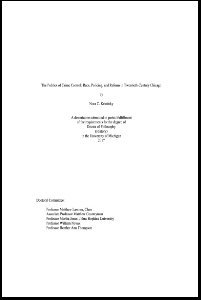The Politics of Crime Control: Race, Policing, and Reform in Twentieth-Century Chicago
By Nora C. Krinitsky
“The Politics of Crime Control: Race, Policing, and Reform in Twentieth-Century Chicago” is a political history of urban policing that examines the integral role of crime control in the governance of modern American cities. It does so through a case study of policing and reform in Chicago from the interwar decades through the post-World War II years, a period that saw massive changes including African American migration, immigration, industrialization, and labor unrest. Crime control served as the central political proxy through which city leaders, reformers, and law enforcement officers attempted to achieve urban order, and in so doing, constructed modern social and racial hierarchies. These officials and reformers contributed to the construction of the coercive state, a state apparatus that prioritized social order as the primary mode through which to express state legitimacy and exercise state power. In the context of early-twentieth-century Chicago, coercive state strategies worked in tandem with Progressive reformers and anti-crime activists to establish and reinforce spatial boundaries and to reify and redefine social hierarchies. Local police discretion represented the primary coercive state tool for addressing urban disorder, as well as one of the most intransigent and opaque modes of state power, especially in the service of defining and reinforcing racial hierarchy. The immediate, discretionary interactions between police and city residents served as one of the primary sites of racial formation in these decades, and elicited investigation, critique, and proposals for reform from myriad urban communities, other state institutions, and municipal reform organizations. Policing, therefore, represented the very intersection of coercive state power, municipal politics, racialization, and efforts for reform.
Ann Arbor, University of Michigan,2017. 409p.


